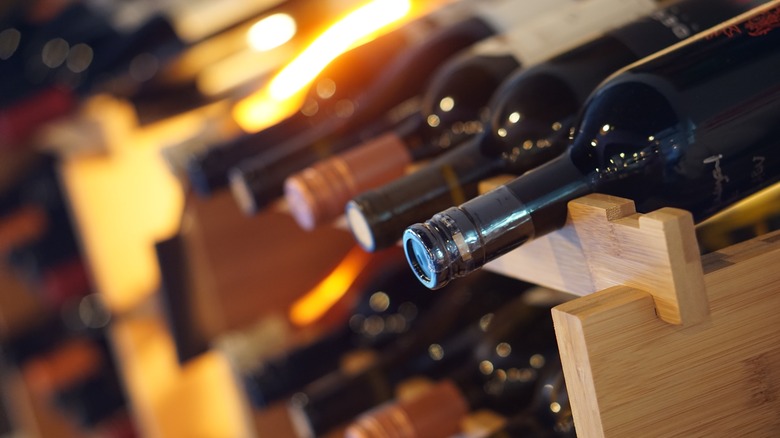Can Unopened Wine Really Go Bad?
Despite what many believe, not all wine ages like fine wine. In fact, only fine wine ages like fine wine — most wines typically only last a few years before spoiling. The first thing you should check to see whether your wine has gone bad is the vintage (harvesting) date, which should be either on the bottle or the cork. Once you know the vintage, you can calculate a bottle's shelf life. As a general rule, white, rosé, and sparkling wines stay good for two to three years. Red wine, on the other hand, has a shelf life of 2 to 10 years depending on the quality. The difference can be attributed to a few different factors, one of which is the amount of tannins present. These astringent compounds give wine its signature dryness but also help keep them fresh for longer.
Other telltale signs that a bottle of wine has gone bad include a change in color (reds will get more crimson while whites will become yellow), bubbles in still wine (or flatness in sparkling wine), strange smells, and an unpleasant vinegar taste. You should be able to tell that something is wrong before you get to tasting the wine so long as you're paying attention. But if you're still in doubt, rest assured that a sip won't make you sick. Wine that's gone bad usually turns to vinegar. So while the taste won't be pleasant, you won't put your health at risk unless you consume large quantities of it.
How to properly store wine
One of the most important things you can do to make sure wine bottles last as long as possible is to store them in the right conditions. In general, light and heat are your enemies. Light can penetrate bottles (especially those made with clear glass) and cause a reaction in the amino acids which will create a sulfuric smell and taste. Direct sunlight is the worst culprit, but artificial fluorescent light can also affect the quality of wine.
Heat will ruin wine by causing the cork to shrink in size; letting oxygen enter the bottle. When this happens, the wine ages much faster and spoils prematurely. If a bottle is left in an excessively hot place (over 80 degrees Fahrenheit), the wine might actually "cook" and lose much of its flavor and complexity. That's why you should lay bottles on their side, so the cork doesn't dry up.
If you're serious about wine, or have fine wine you want to age for several years, invest in a wine fridge (there are good options under $500) that will let you keep your bottles at the recommended 53 to 57 degrees. If you simply like to enjoy the occasional, affordable bottle after work, try to find a place in your home that's dark and chilly enough like a garage or a cupboard. Avoid storing unopened bottles in the fridge, as the temperature is usually too low.

